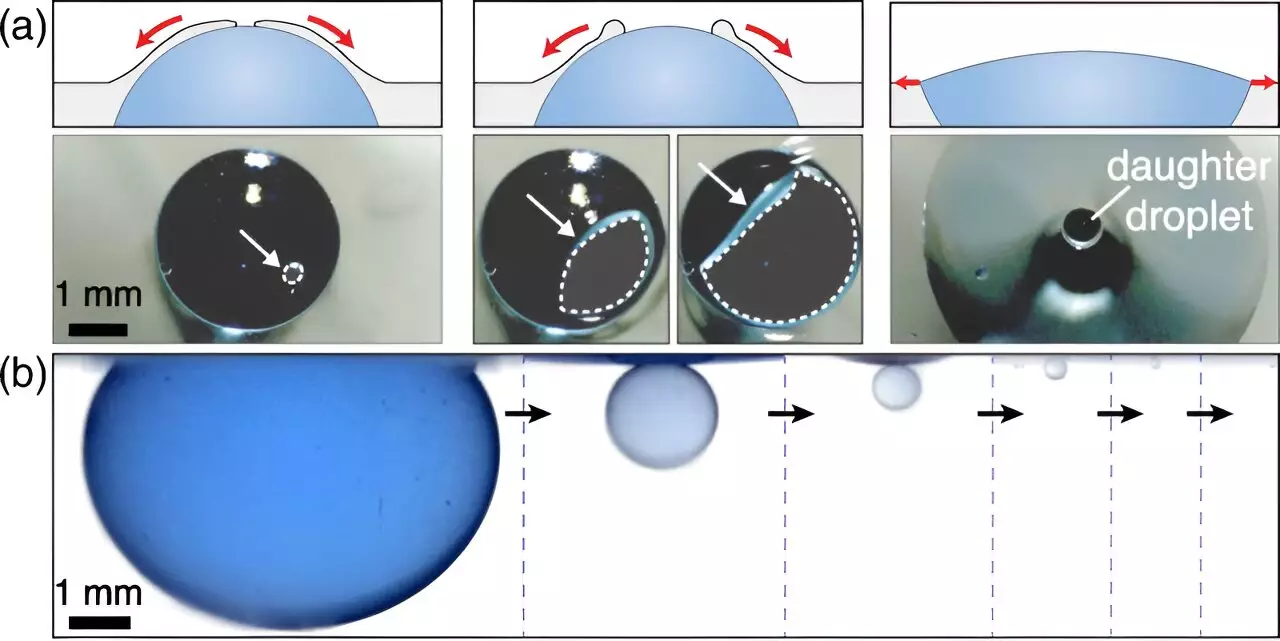Recent research conducted by the University of Illinois Chicago has shed light on the behavior of oil droplets from underwater oil spills. Contrary to previous beliefs, it has been discovered that oil drops can break into tinier droplets at the surface, remaining suspended in the water. This finding has significant implications for oil spill clean-up efforts, as it suggests that traditional clean-up methods may not be as effective as once thought.
The team led by Sushant Anand delved deeper into the mechanics of how oil transitions from a drop to a slick upon reaching the water’s surface. They found that when oil drops reach the surface, they do not immediately form a flat film as previously assumed. Instead, the exposed part of the drop spreads across the water to form a film, while the submerged part deforms and breaks off into smaller “daughter” drops. This process repeats itself, creating a cycle of smaller droplets that remain suspended in the water.
The discovery of this mechanism raises environmental concerns regarding the impact of underwater oil spills. While clean-up efforts have largely focused on the oil slick that forms above the surface, it is now evident that a significant amount of oil remains permanently underwater. This poses a threat to marine life and ecosystem health, highlighting the need for more effective clean-up strategies.
One possible solution suggested by Anand is to increase the viscosity of water to keep oil drops intact and prevent the formation of daughter droplets. By adding a biodegradable, water-soluble compound at the spill site, it may be possible to enhance water viscosity and facilitate easier clean-up of oil spills. This approach could have far-reaching benefits for mitigating the environmental impact of oil spills in water bodies.
Further research is needed to understand the implications of tiny oil droplets on underwater species and ecosystems. Oil companies, in particular, should consider incorporating this newfound knowledge into their spill response models to better predict the size and spread of oil spills. With underwater oil spills being a significant concern in bodies of water worldwide, it is crucial to develop innovative solutions that address the environmental challenges posed by these incidents.
The research conducted by the UIC team has illuminated a previously unknown pathway by which oil can spread pollution inside the ocean. By gaining a better understanding of the behavior of oil droplets from underwater spills, we can work towards developing more effective and sustainable solutions for mitigating the environmental impact of oil pollution in marine environments.


Leave a Reply